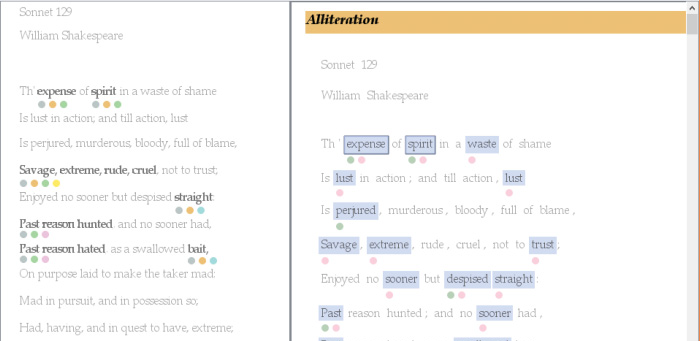
Contributors:
Hrim Mehta, Adam Bradley, Mark Hancock, and Christopher Collins
In the domain of literary criticism, many critics practice close reading, annotating by hand while performing a detailed analysis of a single text. Often this process employs the use of external resources to aid analysis. In this article, we present a study and subsequent tool design focused on leveraging a critic’s annotations as implicit interactions for initiating context-specific computational support that automatically searches external resources. We observed 14 poetry critics performing a close reading, revealing a set of cognitive practices supported through free-form annotation that have not previously been discussed in this context. We used guidelines derived from our study to design a tool, Metatation, which uses a pen-and-paper system with a peripheral display to utilize reader annotations as underspecified interactions to augment close reading. By turning paper-based annotations into implicit queries, Metatation provides relevant supplemental information in a just-in-time manner and acts as a bridge between close and distant reading.
Publications
-

H. Mehta, A. J. Bradley, M. Hancock, and C. Collins, “Metatation: Annotation as Implicit Interaction to Bridge Close and Distant Reading,” ACM Trans. on Computer-Human Interaction (TOCHI), p. 35:1–35:41, 2017.
@article{meh2017a,
title={Metatation: Annotation as Implicit Interaction to Bridge Close and Distant Reading},
author={Hrim Mehta and Adam James Bradley and Mark Hancock and Christopher Collins},
journal = {ACM Trans. on Computer-Human Interaction (TOCHI)},
publisher={ACM},
pages = {35:1–35:41},
articleno = {35},
numpages = {41},
year=2017,
doi = {10.1145/3131609}
}
